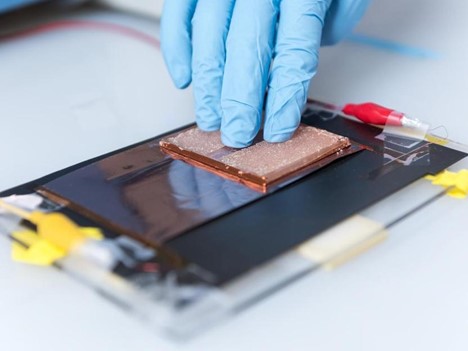by Kithma Gamage
With the rapid development of mankind, energy shortage has become a serious concern all over the world in recent years. Due to the abundant availability of mechanical energy in our living and industrial environments, novel methods for harvesting this mechanical energy from ambient environments have attracted great interest as a promising solution for the critical problem of energy shortage. A nanogenerator is one of the technologies that is used to convert mechanical energy or thermal energy into electrical energy. There are mainly three different types of nanogenerators, namely piezoelectric, triboelectric, and pyroelectric nanogenerators. Both the piezoelectric and triboelectric nanogenerators can convert mechanical energy into electricity whereas pyroelectric nanogenerators are used to convert thermal energy into electrical energy. Out of piezoelectric and triboelectric approaches, the most novel approach is triboelectric nano generator, commonly referred to as TENG.
A triboelectric nanogenerator employs triboelectric effect and electrostatic induction in the process of converting the external mechanical energy into electrical energy. The triboelectric effect is a type of contact electrification on which certain materials become electrically charged after they are separated from a different material with which they were in contact. In a triboelectric nanogenerator, two films of different materials (can be either organic or inorganic) of opposite tribo-polarity are used and two electrodes are attached to the back sides of the films. The separation of the films which were in contact creates a triboelectric effect which in turn generates a potential difference between the two films. In the outer circuit, an electron flow occurs between the two electrodes to balance out this potential difference.
Different TENGs use different modes to generate charges. These methods can be divided into four main categories. Specifically, they are vertical contact separation mode, lateral sliding-mode, single electrode mode and freestanding triboelectric layer mode based TENG. Depending on the application, TENGs can be used as energy harvesters or self -powered active sensors. TENG has the potential to harvest mechanical energies such as vibrational, rotational, human motion etc. and even environmental energies such as wind energy, wave energy etc.
We can enhance the performance of a TENG by varying some factors that effect the performance of TENG according to the application. Selecting the right materials is one of the main concerns when it comes to optimizing TENG. Generally, it is said that the greater the distance between two materials in the triboelectric series the better, but this may vary in accordance with the application. Some of the most popularly used materials are PTFE, Kapton and Al. And the surface structure also matters in optimizing the TENG. Modernizing surface characteristics such as surface area, porosity etc. help in enhancing the performance of TENG. Optimizing the device structure such as using different modes of TENG for different applications is another way to enhance the performance of TENG.
As an emerging technology to harvest mechanical and environmental energy, TENG seems to have a promising future as it plays a major role in solving the energy crisis the world is fac in a vast range. In the years to come, we may see many applications of TENG in the form of energy harvesters as well as self-powered sensors in the market.

